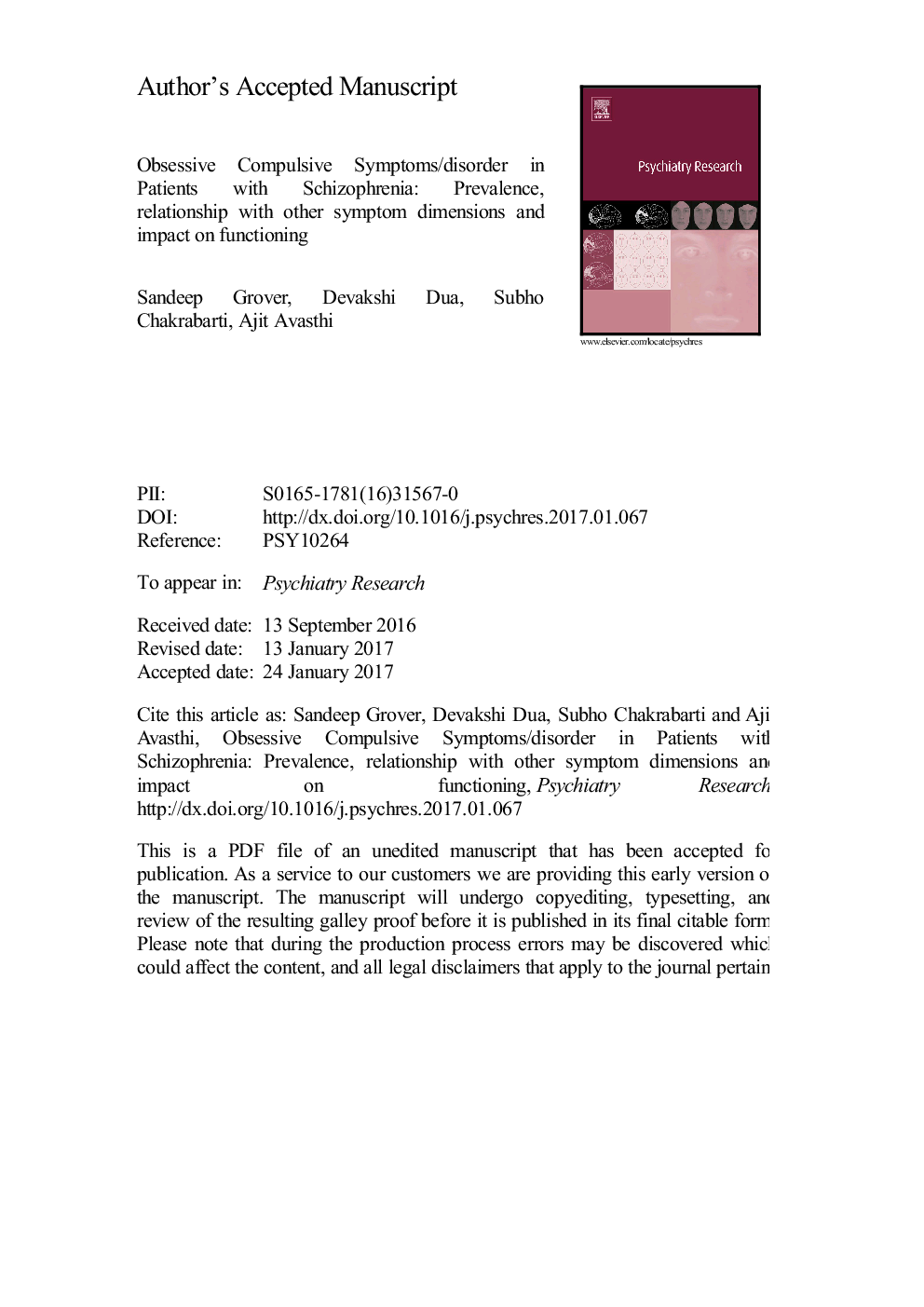ترجمه فارسی عنوان مقاله
علائم / اختلال وسواسی اجباری در بیماران مبتلا به اسکیزوفرنی: شیوع، ارتباط با ابعاد دیگر علامت و تأثیر بر عملکرد
عنوان انگلیسی
Obsessive Compulsive Symptoms/disorder in patients with schizophrenia: Prevalence, relationship with other symptom dimensions and impact on functioning
| کد مقاله | سال انتشار | تعداد صفحات مقاله انگلیسی |
|---|---|---|
| 114892 | 2017 | 25 صفحه PDF |
منبع

Publisher : Elsevier - Science Direct (الزویر - ساینس دایرکت)
Journal : Psychiatry Research, Volume 250, April 2017, Pages 277-284
ترجمه کلمات کلیدی
جنون جوانی، نشانه های اجباری وسواسی، اختلال وسواسی اجباری، همبودی، وجود همزمان دو بیماری،
کلمات کلیدی انگلیسی
Schizophrenia; Obsessive compulsive symptoms; Obsessive Compulsive disorder; Comorbidity;

